Complaint as Counteraction:
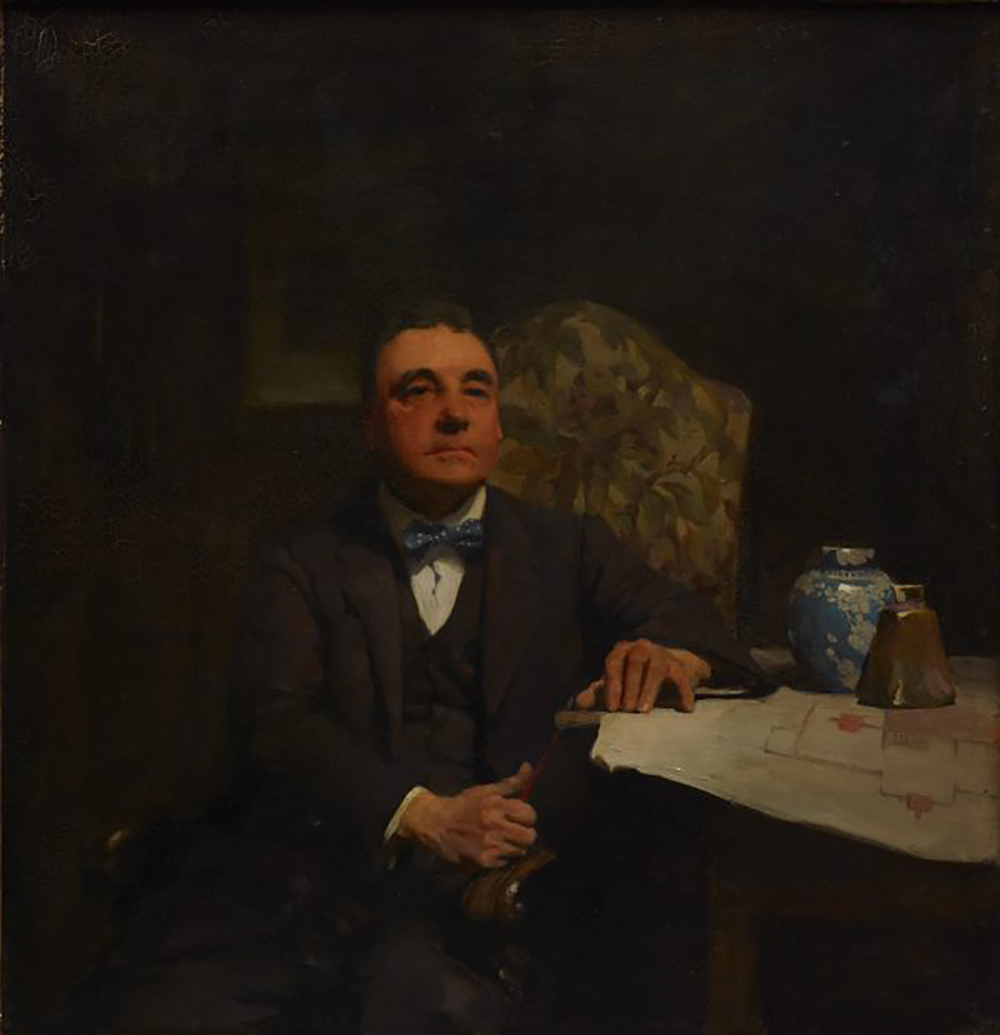
By Eugene Yiu Nam Cheung & Soo-Min Shim
8 May, 2020
‘You are heard as making a complaint; you are heard as being complaining. You are heard as expressing annoyance about something. Grumbling; grumble; grump; grumpy.
You might be offering a careful critique. You might be taking care. It doesn’t matter how much care you take; how much time you take in assembling a case.
It is a quick judgment. You are judged before you say anything. The judgment has priority.’
Sarah Ahmed, ‘Feminist Complaint’, Feminist Killjoys, (2014)
An ontological truth of the art world is that everybody is a gossip. Gossip can assuage and placate frustration, it can set out to ridicule or, in its most intense form, destroy. It’s a guerilla weapon of immense power, which is to say that truth can come from gossip, or that gossip has the propensity to expose truth. People are warned of reputations, wrongdoings, patterns of behaviour, how one should be cautious and so forth. Gossip can be care masked as speculation—which is also from where its effectiveness is derived. Certainly, the poetics are fragile, but perhaps this is inevitable because all language is slippery.
In Australia’s art world, people gossip about the reasons behind certain appointments: who got what position, how, who slept with who, why, who was given an opportunity, when—because to make sense of an opaque industry we are only left with our powers of deduction, the certainty of supposition (we have suspicions that this too is systemic in other artworlds). Yet the art world’s institutional players—its gatekeepers—often see gossip coming from us, people of colour, as a complaint: rogue behaviour whose only purpose is to destabilise and crucify. ‘They want our heads on a spike!’ is the gossip we’ve received from the inside. We are contrarians by sheer force of our subject position.
Call our complaint hyperbole. Call it naive. Call it circuitous. Call it the ‘identity card.’ Projections don’t mean much to us. We are, as Sarah Ahmed writes, unwilling to bear a broken system: ‘a complaint is disobedience. She does not obey; she is willing herself that way.’
Borne of our gossip, of the ways it has been marked and scorned, we write this piece as a complaint. Because, while we can gossip about the Archibald Prize forever, behind the scenes, hidden (where all gossip belongs, right?), we are really in pursuit of gossip’s power to transform into complaint, which might disinter and reach clearer truths. We are, in other words, looking for the facts. If we should be sorry then we are only apologetic insofar as this complaint might be seen as salacious, for its drama and ability to insult. These are not our intentions. We are imagining what the future might look like, the proverbial ‘greener pastures.’ Often, people will like the sound of this more.
• • •
Soo-Min Shim: Even before I was involved in the art world, I had heard of the Archibald. I knew it was like the Oscars, but for artists, with the same connotations of excess, glamour and adulation. As someone on the fringes, who had not yet started studying or becoming invested in it, I honestly took the Archibald as a very important measure of merit and success. Winners of big prizes get sponsorship, commercial representation, reputation and clout.
As I started becoming more sceptical of the power structures that inform the art world, and as the Archibalds came and went, I noticed a pattern. Namely, I felt as though I could not connect with many of the winners because all of them—every single one to this day—have been white. More specifically, many of the winners have been white artists referencing white art: Yvette Coppersmith after George Lambert, Mitch Cairns painting Agatha Gothe-Snape, Ben Quilty painting Margaret Olley, Fiona Lowry painting Penelope Seidler, John Beard painting Janet Laurence, etc.
Eugene Yiu Nam Cheung: Australia’s cultural obsession with the Archibald is slightly morbid. The esteem of the prize is largely anchored to its supposed history, as if the longer something exists the more precious we ought to hold it. Notwithstanding the whiteness you’ve just identified, I think it’s important to question why so many people of colour still feel compelled to enter.
I spoke with a friend who is now a well-respected artist in Australia, and they were saying one of the allures of entering the Archibald (and art prizes in general) is because they want to be seen as being of the same ‘calibre of artists who have won before.’ Calibre strikes me as an interesting metric. For people of colour, it seems as if it’s not so much technical calibre that is being referred to here, but rather cultural calibre. If it’s only white artists who have won before, it’s the calibre and quality of whiteness one wants to be proximate and compared to. As scholars Robin DiAngelo, Cheryl Harris and Iris Marion Young have put it before, contiguity to whiteness enables the possibilities of advancement and opportunity. So, whether a person of colour’s aim in entering is money, clout, or otherwise, to be accepted into the Archibald while resigned to the (statistical) reality of not winning, they are nevertheless investing in their soft power. It’s a claim to space in some ways.
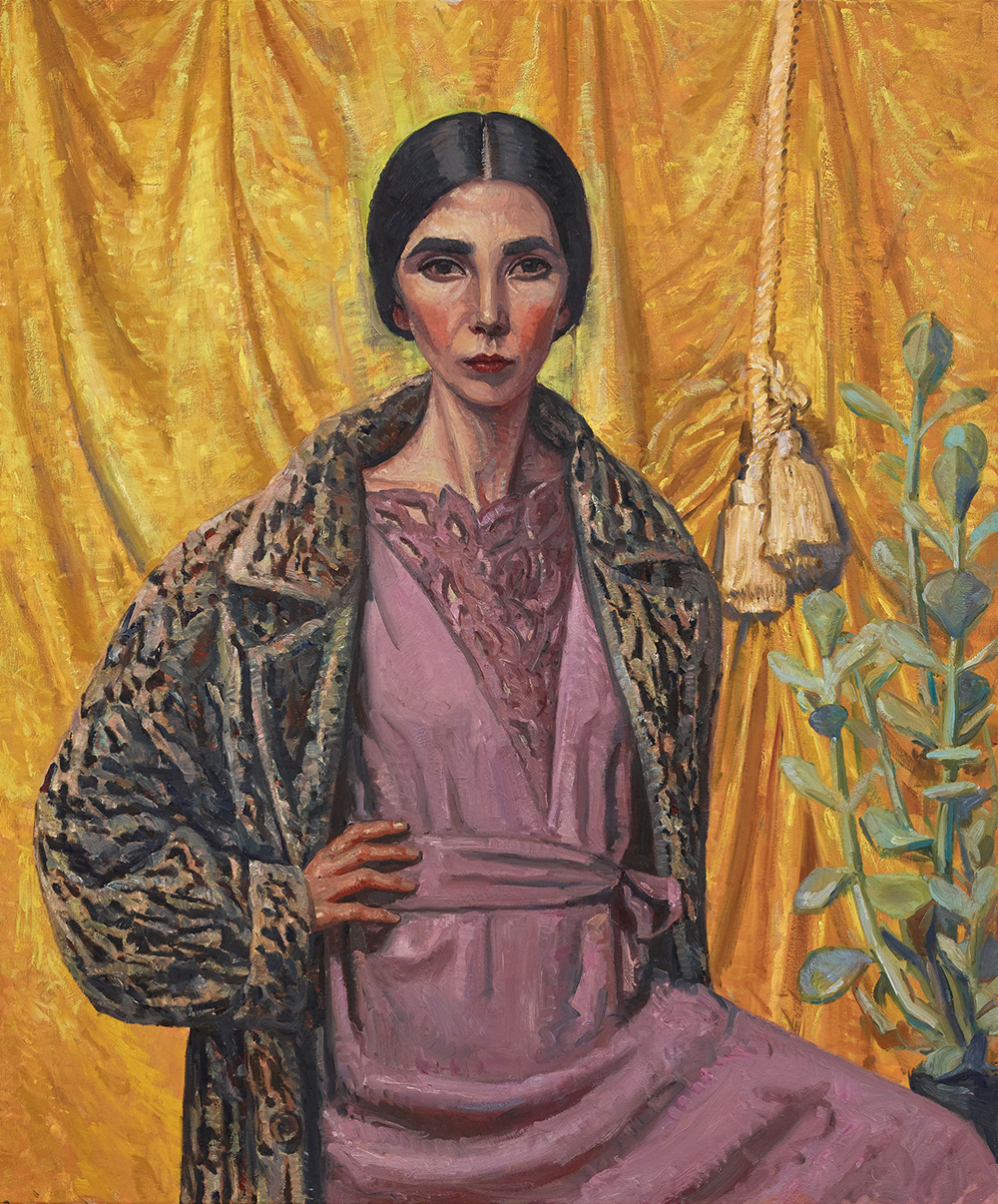
Yvette Coppersmith (Archibald winner 2018), Self-portrait, after George Lambert, (2018)
Image courtesy AGNSW
But, aside from prestige, there’s also financial precarity to consider. If the average income of an Australian artist is around $48,400 per annum (a generous estimate), $100,000 is a pretty sweet deal for what might be seen as a conventional portrait. And, while I wouldn’t go so far as to say it’s easy to enter a winning picture, it sometimes appears as if the prize is awarded not so much for the art object created than for an artist’s success in gaming the politics of its process. For instance, it’s not unfamiliar to hear that entrants spend months strategising who their sitter will be to play into the subjective tastes of the judges. I’d reason, also, that the unbroken lineage of white winners makes clear a racial dimension to the game as well.
Though it may be the winning artist who gets the benefits of immediate sponsorship and/or representation, the finalists also get an ‘intangible’ benefit that could translate into something pecuniary down the track. They carve their inclusion in the prize onto CVs and Instagram bios as if it’s the insignia of some Exclusive Cultural Order, hoping that down the line it leads to future ventures. A somewhat Sisyphean task of hurling a bowling ball, but not knowing when it’ll hit the pins. In other words, if you can paint half well, then it’s worth entering.
SMS: Absolutely. It’s precisely because of the promise of these benefits that so many people enter. I think it’s worth interrogating the mythology surrounding the Archibald, and the rhetoric employed by the Art Gallery of NSW to uphold it. If the Archibald is meant to be awarded to the ‘best’ portrait ‘preferentially of some man or woman distinguished in art, letters, science or politics’, what cultural narrative is Australia trying to write? Could it really be that only white artists are making art deemed the best by the Archibald or is the Archibald prejudiced? Perhaps the Archibald really is like the Oscars: meretricious and empty pomp, too often more concerned with celebrity than substance.
It’s important, then, to consider how the prize itself is judged. Academics and critics like Joanna Mendelssohn at UNSW and Shantel Wetherall have criticised the process before given that the trustees of the AGNSW still judge it (and an invited artist is asked to judge the Sulman). When the Archibald Prize was first established most of the trustees were artists, but if you look at the current board it’s mostly business people, financiers, bankers. There are only two artists out of eleven: Tony Albert and Ben Quilty. I want to acknowledge Tony Albert’s crucial work and presence on this board and I don’t want to erase his efforts. But it’s disappointing that he is the only person of colour there.
In comparison, other prizes seem to make more of an effort to have specialist knowledge involved in the judging process. Take for example, the Ramsay Prize, which is the prestigious state prize by the Art Gallery of South Australia. Last year they had an international judging panel that included the Deputy Director of the National Gallery of Singapore, Russell Storer, who is part of curatorial and research there. They also ensured there was an artist, Richard Lewer, and the AGSA preference with Dr Lisa Slade, the Assistant Director of Artistic Programmes. This ensures not only a balance of perspectives, but also a wealth of knowledge.
I think the process of judging in the Archibald hasn’t been interrogated enough. For example, according to this SBS article by Archibald curator Anne Ryan, the trustees meet over one weekend where they ‘whittle down 794 Archibald entries to just 57 finalists.’ With such huge numbers, is one weekend enough to process, deliberate, and challenge one another, while also thinking through the unconscious biases and preferences at play?

Louis Cahan (Archibald winner 1962), Patrick White, (1962)
Image courtesy AGNSW
EYNC: There’s also a legal dimension to this that’s often obfuscated or not properly understood. Prizes like the Archibald exist because of legal instruments known as ‘trusts’, which can be used by the wealthy who want to bequeath a part of their estate to a certain cause, the arts being one of them. The Archibald Prize’s trust falls into a subcategory of ‘charitable trusts’, which evade certain estate taxes, so it’s a particularly effective tactic for the rich to affix their name to something in perpetuity while also mitigating financial loss. Put another way, though we are led to believe the Archibald is a project of financial generosity, there is also the existence of self-interest and of preserving one’s ego.
This is how it functions: if the terms of a trust deed delineate that a certain sum of money is to be awarded to a certain genre of art—painted portraits—and that this work of art should depict a person of a certain ‘pedigree’, then the trustees are bound to pick a winner based on these stipulations. If the terms aren’t adhered to, the money can’t be awarded. In 1943, William Dobell’s winning entry was contested as a ‘caricature’ rather than a portrait and the case ended up in court. And more recently, in 2004, Craig Ruddy’s winning piece was argued as a ‘charcoal sketch’ and found itself in a similar state of legal contestation.
Consider also that the Archibald has been running since 1921—there’s an argument to be made that the Archibald’s trust deed has actually ‘frozen time.’ That is, the Archibald rewards and champions an antiquated standard of art, where a painted portrait of an ‘important’ person is what it—and subsequently mainstream Australia—considers the apex of achievement for artists.
If the Archibald is meant to be our art world’s most esteemed event, but the rubric hasn’t been rethought since the early twentieth century, what do we expect our artists to make? Are we so comfortable in nostalgia that we are bound to celebrate the past at the expense of fostering the present and future?
And if it is, as you put it, whiteness that is championed and given the gauntlet year after year, is there a psychic dimension to the Archibald’s inability to change as well—that it’s fundamentally bound to preserve the myth that whiteness must remain the standard?
I think about ways some artists have thought to challenge the Archibald’s strictures, like Ramesh Mario Nithiyendran’s entry last year, ‘Multi-limbed self-portrait (after ceramic figures)’ (2019), which formally speaking, is a self-portrait executed with gestural brush strokes negating conventions of realism and photographic likeness. But viewed wholly, Ramesh is an outlier, and the trend remains a prize that compels its entrants to create paintings of a certain vogue, one which has long lost touch with the ‘now.’
As arts professionals, we don’t complain about this publicly because of our ball-and-chain relationship to art prizes and money in general. To subsist in this industry is to recognise the importance of having access to capital, and without being on amicable terms with institutions like AGNSW or, at the very least, trying to construct some kind of professional connection with them, your celebrity is diminished and so too is some prospect of financial stability. The players most successful in this institutional game—those who get the shows, those who get numerous shows, or those who are given space to put on the same show at numerous institutions—are, as you say, white. Ergo, at the heart of the art world lies a machine that serves to only better the material conditions of white people.
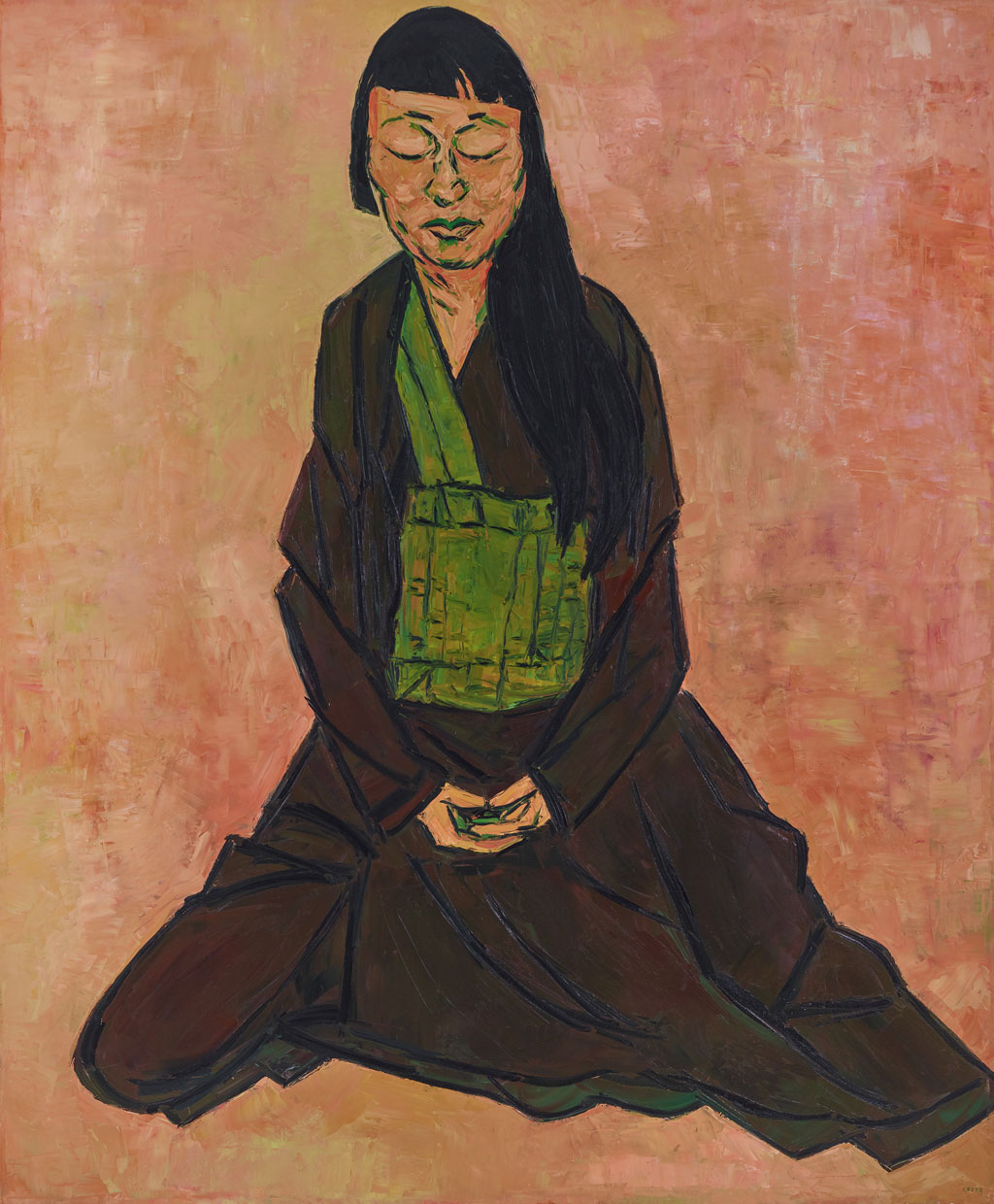
Tony Costa (Archibald winner 2019), Lindy Lee (2019)
Image courtesy AGNSW
SMS: Our reliance on prizes is really accentuated when brought in comparison to other countries. Last year the Australian Academy of the Humanities released a report on public expenditure on artistic, cultural and creative activity in Australia. They found that Australia spends 0.72 per cent of Gross Domestic Product on cultural activity in comparison to the 1.09 percent of other OECD countries. At the same time, we don’t have the same system of philanthropy and private funding that is favoured in the United States. What this means is that the Archibald becomes one of the few methods of revenue for artists but also the one prize that Australians know. There’s a lot of responsibility placed on that prize.
Every now and then, though, they will want to assuage us by giving us a tiny token. For example, I guess you might say that I should be less harsh on the Archibald because a portrait of Lindy Lee won the Archibald last year. She looks like me, and the Archibald is about painting portraits of great Australians, so I should stop complaining. But, while there’s merit to the work and I respect Lindy Lee with all my heart, I still cannot connect with this painting because it is what Tony Costa thinks Lindy Lee looks like. I am not interested in the white gaze. I would be more interested if this was a self-portrait by Lindy Lee.
EYNC: Just because you can paint something or someone doesn’t mean you should. We exist in a culturally literate era where the power relations of history are being more closely interrogated. The tired rhetoric of ‘political correctness gone mad’ springs to mind here, obviously.
But perhaps indulging in this ‘madness’ is uncomfortable for the more conservative streams of the art world: it lays bare the truth that what an artist decides to put on and omit from a canvas is not as benign and apolitical as what one might believe. If we look to Western art history, at the development of portraiture—as instruments commissioned by the Church, State, Royalty, the Elite—what’s put on a canvas and shown to the world has always been political.
Despite the consent that Lindy Lee gave to Tony Costa to paint her portrait, I think she may have forgotten to consider a sociological truth: that the representation of people of colour has long been a narrative controlled and defined by whiteness and white people. To reproduce this dynamic in artmaking without considered critique—whether through the coloured sitter/white painter dialectic or otherwise—only allows it to metastasise. One might allege that I’m policing here, but it’s irrefutable that once a work enters the public domain, interpretations become multiplicitous, or as the Australian saying goes, ‘open slather.’ Put simply, a sitter’s involvement doesn’t end with a finished canvas. Remaining conscious of how the power dynamics in (and behind) the artwork can be seen, understood and taken as truth is imperative, because that is how a cultural narrative is shaped. If there was an element of subversion to Lindy’s role as sitter to recognise this, perhaps I might be inclined to think differently, which is to say more generously. But in the end, without this kind of cultural awareness, the narratives of people of colour continue to be dictated and commoditised by the white gaze.
I’m thinking now, also, of the Archibald’s contemporaneous Sulman Prize last year, which was profoundly bad in its platforming of problematic artworks. Specifically, we had Leslie Rice’s ‘Teha’amana and her husband, Paul Gauguin’ (2019), painted in the retributive manner of the biblical episode where Judith decapitates Holofernes. Stylistically, Leslie’s practice might be categorised as ‘neo-Baroque’—he appropriates techniques of the seventeenth century while at times smattering his canvases with signifiers of modernity. For instance, his past paintings have featured skulls and other memento mori, mythical beasts, draped red fabrics and a pair of Converse All Stars worn in a self-portrait. Leslie’s work mimics both the contemporary and Caravaggesque, and indeed, it’s likely that this particular work in the Sulman pays direct homage to Caravaggio’s version of ‘Judith Beheading Holofernes’ (1598-99).
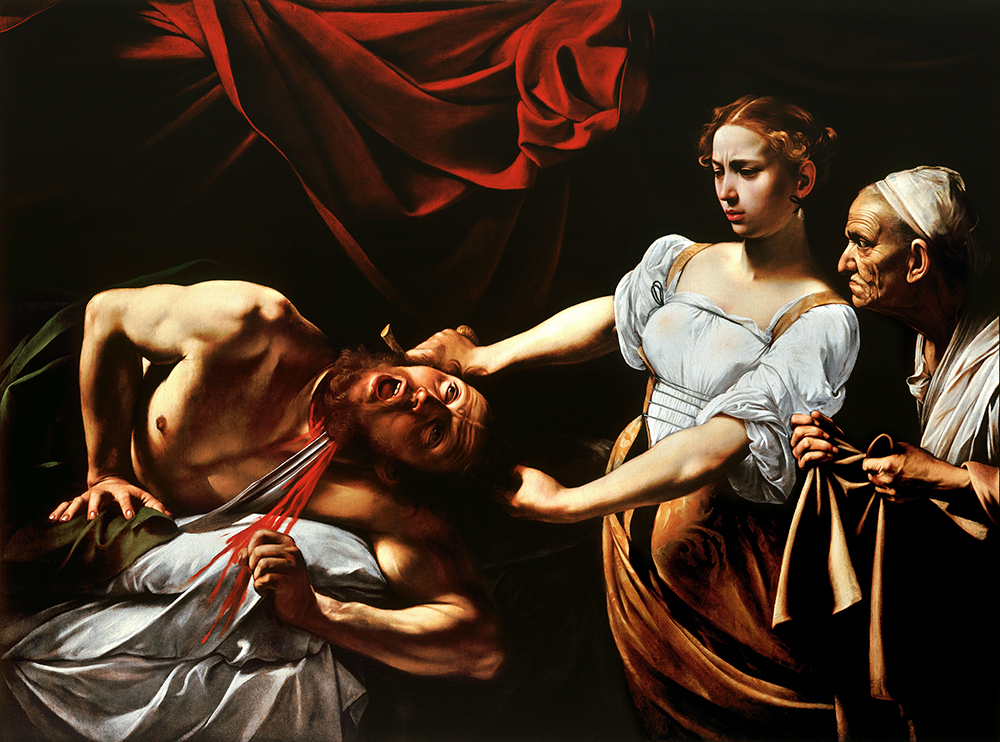
Caravaggio, Judith Beheading Holofernes (c.1598-9)
Similarly to Caravaggio’s widely problematised depiction of Judith—as a delicate woman tormented by her own violence, described by art historian Griselda Pollock as a ‘masculine projection’ of what it means for woman to be protagonist in ‘dying, killing [and] action’—Leslie has succeeded in reproducing timidity and contrition despite the painting’s supposed message of empowerment and subversion.1 Of the way Teha’amana and Gauguin’s relationship climaxed, Leslie notes that his picture of assassination ‘is but one possible way the arrangement may have ended, many years later.’ But while history may be uncertain as to how their union actually finished, it is definitive as to how it began: she was wed to Gauguin as a child. Here, in Leslie’s work, her eyes are averted from us, breasts on full display, while holding in a basket the head of a man who weaponised his power to exploit girls in the Pacific. I’m reminded of John Berger, who once said of art history,
‘You painted a naked woman because you enjoyed looking at her, put a mirror in her hand and you called the painting “Vanity,” thus morally condemning the woman whose nakedness you had depicted for your own pleasure.’
I want to appropriate Berger and say,
You painted a topless Teha’amana in the style of a Salon painter because you enjoy her naked body, put Gauguin’s head in her hands and called the painting a ‘Redressing [of] 20th-century visual stereotypes‘, thus being able to exoticise the woman with your imagination under the guise of feminist critique.
What enchants a white artist to add another vector of exoticisation to Teha’amana and her story? She is passive so that we can survey her naked body, or more accurately, what Leslie thinks her naked body would’ve looked like. As Berger notes,
‘One might simplify this by saying: men act and women appear. Men look at women. Women watch themselves being looked at…she turns herself into an object—and most particularly an object of vision: a sight.’
Teha’amana doesn’t stare us down like Manet’s Olympia (1863) for violating her space. Nor is she reminiscent of Gentileschi’s heroic Judith. In fact, she’s rather demure for someone who’s just murdered her husband. There is neither emancipation nor ecstasy in the image, which seems unjust. It strikes me as odd that Leslie hasn’t asked this question of himself: ‘Has she not suffered enough?’
SMS: It was not just Leslie, though. Last year’s Archibald was full of white artists painting people of colour. Out of last year’s fifty-one finalists, around six were people of colour. However, the number of works made by white painters of people of colour was twelve. I think this was supposed to make me feel represented, but instead I felt surveilled. As you pointed out in your analysis, I felt objectified and passive. The chances of someone like me winning with a painting I created, versus simply being the subject, is literally half. I have no agency as a painter myself, so, should I wait for the next cis, male, white artist to ask me to sit for him? Can I only exist in the art world and be recognised by it once I have been validated by a white artist? I want representation where the creator is in control. The issue deserves its own article in and of itself…the scope of this conversation cannot cover it.
But there’s also space to commend some art prize milestones in recent times: when Justine Youssef won the John Fries Prize last year it was an important recognition of her vital work with a community. When Vincent Namatjira won the Ramsay Prize and Blak Douglas won the Kilgour Prize last year, it showed a belated recognition of the achievements of First Nations artists. Or, also last year, when Nadia Hernández’s works exploring her life in the Venezuelan diaspora won the Churchie.
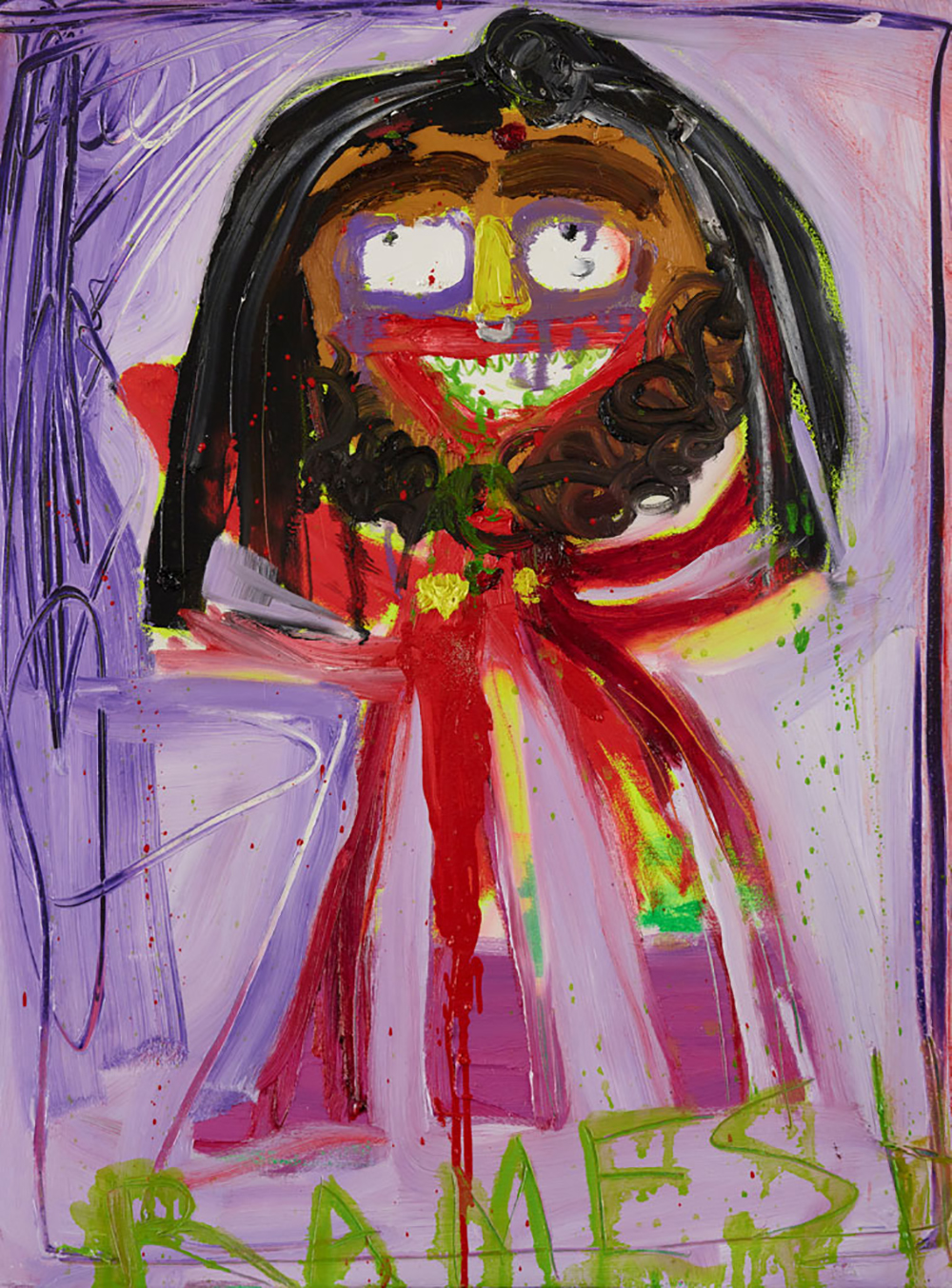
Ramesh Mario Nithiyendran, Multi-limbed self-portrait (after ceramic figures), (2019)
Image courtesy AGNSW
EYNC: How do we shift the institutional standard? What do we have to say and do for them to listen to us? It’s not so much that we’re better off without the Archibald, but rather it can be mobilised as some vehicle of progress. How can we convince AGNSW to collapse the Archibald trust and use its financial power to reward innovation? How might artists who have done problematic things be helped to learn, what resources do they need? Or even, how can they help themselves? Our complaint exists for them to be better, to do better, to stop creating works that fit a standard that has the political effect of subordinating others. This is difficult work. And, of course, the question we might ask ourselves is how can we transform a complaint into action? Our bottom line is change, but it seems we need to first convince the country this change is needed. It seems defeatist to say it’s impossible, but also too illusory to say it’ll take time. Who will read our conversation and brush it off as propaganda? What will it take for them to be sympathetic to our version of the truth?
SMS: What the Archibald seems to reveal is an inflexible and dogmatic insistence on tradition. I think the AGNSW’s recent response to Covid-19 is also symptomatic of their conservative policies. Take, for example, Canada’s Sobey Art Awards, the pre-eminent contemporary art prize there. Usually, like the Archibald, a single winner is awarded $100,000 (CAD). Due to Covid-19, the ball and exhibition has been cancelled. But instead of cancelling the event altogether, the board decided to prioritise the livelihoods of artists, providing $25,000 to all twenty-five long listed artists. I think Australian institutions could learn from this flexibility and adaptability. Only then can galleries truly commit to serving artists who are vulnerable at this moment. This is just one example, but I would love to see Australian galleries less hindered by their bureaucratic policies and more creative with their responses.
You’re right when you say this is difficult work. This is a problem for the entire arts ecology to tackle, and this includes the realm of criticism. Criticism can be the alchemical process of turning gossip and speculation into argument and analysis. Perhaps, then, the problem might also be that people like you and I need more spaces to write. As ineffective as writing can feel or seem, it is the beginning of an important process of change and the assertion of our right to complain and to disobey.